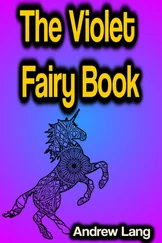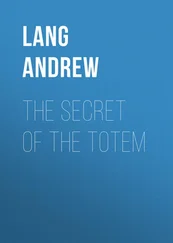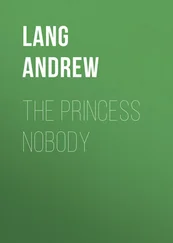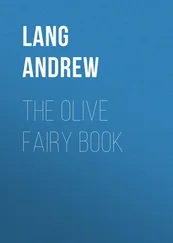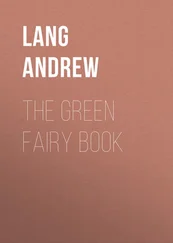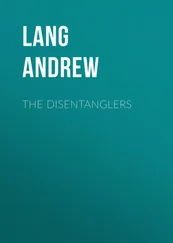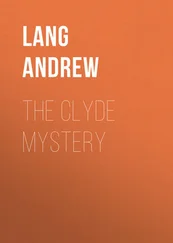Andrew Lang - The Mystery of Mary Stuart
Здесь есть возможность читать онлайн «Andrew Lang - The Mystery of Mary Stuart» — ознакомительный отрывок электронной книги совершенно бесплатно, а после прочтения отрывка купить полную версию. В некоторых случаях можно слушать аудио, скачать через торрент в формате fb2 и присутствует краткое содержание. Жанр: foreign_antique, foreign_prose, на английском языке. Описание произведения, (предисловие) а так же отзывы посетителей доступны на портале библиотеки ЛибКат.
- Название:The Mystery of Mary Stuart
- Автор:
- Жанр:
- Год:неизвестен
- ISBN:нет данных
- Рейтинг книги:4 / 5. Голосов: 1
-
Избранное:Добавить в избранное
- Отзывы:
-
Ваша оценка:
- 80
- 1
- 2
- 3
- 4
- 5
The Mystery of Mary Stuart: краткое содержание, описание и аннотация
Предлагаем к чтению аннотацию, описание, краткое содержание или предисловие (зависит от того, что написал сам автор книги «The Mystery of Mary Stuart»). Если вы не нашли необходимую информацию о книге — напишите в комментариях, мы постараемся отыскать её.
The Mystery of Mary Stuart — читать онлайн ознакомительный отрывок
Ниже представлен текст книги, разбитый по страницам. Система сохранения места последней прочитанной страницы, позволяет с удобством читать онлайн бесплатно книгу «The Mystery of Mary Stuart», без необходимости каждый раз заново искать на чём Вы остановились. Поставьте закладку, и сможете в любой момент перейти на страницу, на которой закончили чтение.
Интервал:
Закладка:
‘Answeris S rJames balfo rcan better tell nor he And knew better and befoir the deponer yof. And quhen the Quene wes in glasgow my lord Boithuile send the deponar to S rJames balfo rdesiring that he wald cum and meit my lord at the kirk of feild To quhome Schir James ansuerit, “will my lord cum thair? gif he cum it wer gude he war quiet.” And yit they met not at that place than nor at natyme thairefter to the deponers knawledge.
‘Thair wes xiiii keyis quhilkis this deponer efter the murtho rkeist in the grevvell hoill [? quarrel-hoill, i. e. quarry hole] betuix the abbay and leith. And towardes the makers of the keyis they were maid betuix Leuestoun and S rJames balfo rand thai twa can tell. Item deponis that Ilk ane that wer of the band and siclike the erle of Morton and Sy rJames balfo rsuld haif send twa men to the committing of the murther. And the erle boithuile declarit to the deponar are nyt or twa afore the murtho rfalland in talking of thame that wer in the kingis chalmer My lord said that Sandy Durham wes ane gude fallowe and he wald wische that he weir out of the same.
‘This is the trew copy, etc.’
Perhaps few will argue that this passage has been fraudulently inserted in the Cambridge MS. If not, Bellenden lied when he attested the mutilated deposition to be a true copy. His own autograph signature attests the Cambridge copy. Moray, who heard Bowton make his deposition, was a partner to the fraud. The portion of the evidence burked by Moray is corroborated, as regards the signatures of the band for Darnley’s murder, by Ormistoun, much later (Dec. 13, 1573) in Laing, ii. 293. Ormistoun, however, probably by an error of memory, says that he saw what Bothwell affirmed to be the signature of Sir James Balfour, in addition to those spoken of by Bowton, namely Argyll, Bothwell, Huntly, and Lethington. This statement as to Balfour Bowton withdrew in his dying confession as published. Bowton’s remark that Lethington’s signature came ‘far beneath the rest’ sounds true. Space would be left above for the signatures of men of higher rank than the secretary.
Bowton saw the band at Dunbar (April-May, 1567, during Mary’s detention there), ‘in one of two silver coffers.’ He only ‘understands’ that the band was ‘with the remanent letters, and put in the Castle by George Dalgleish.’ If ‘the remanent letters’ are the Casket Letters, and if Bowton, at Dunbar, had seen them with the band, and read them, his evidence would have been valuable as to the Letters. But as things are, we have merely his opinion, or ‘understanding,’ that certain letters were kept with the band, as Drury, we know, asserted that it was in the Casket with the other papers, and was destroyed, while the Letters attributed to Mary ‘were kept to be shown.’ Of course, if this be true, Morton lied when he said that the contents of the Casket had neither been added to nor diminished.
Next, Bowton denied that, to his knowledge, Bothwell and Balfour met at the Kirk o’ Field, while Mary was at Glasgow, or at any other time. If Bowton is right, and he was their go-between, Paris lied in his Deposition where he says that Bothwell and Sir James had passed a whole night in Kirk o’ Field, while Mary was at Glasgow. [3] Laing, ii. 284.
Bowton’s confession that Morton ‘should have sent two men to the committing of the murder,’ explains the presence of Archibald Douglas, Morton’s cousin, with Binning, his man. These two represented Morton. Finally, Bowton’s confession in the Cambridge MS. joins the copy of his confession put in at Westminster, on the point of the fourteen false keys of Kirk o’ Field, thrown by Bowton into a gravel hole. Unless then the Cambridge MS. is rejected, the Lord Justice Clerk and Moray deliberately suppressed evidence which proved that Moray was allied with two of Darnley’s murderers in prosecuting his sister for that crime. Such evidence, though extant, Moray, of course, dared not produce, but must burke at Westminster.
I have shown in the text (p. 144) that, even on Bowton’s evidence as produced at Westminster, Moray was aware that Bothwell had allies among the nobles, but that, as far as the evidence declares, he asked no questions. But the Cambridge MS. proves his full knowledge, which he deliberately suppressed. The Cambridge MS. must either have been furnished to Lennox, before the sittings at Westminster; or must have been the original, or a copy of the original, later supplied to Dr. Wilson while preparing Buchanan’s ‘Detection,’ the ‘Actio,’ and other documents for the press in November 1571. [4] See Murdin, p. 57.
It will be observed that when Lethington was accused of Darnley’s murder, in September 1569, Moray could not well have prosecuted him to a conviction, as his friends, Atholl and Kirkcaldy, having been present at Bowton’s examination, knew that Moray knew of Lethington’s guilt, yet continued to be his ally. The Cambridge copy of the deposition of Hay of Tala contains no reference to the guilt of Morton or Lethington; naturally, for Morton was present at Hay’s examination. Finally, the evidence of Binning, in 1581, shows that representatives of Lethington and Balfour, as well as of Morton, were present at the murder, as Bowton, in his suppressed testimony, says had been arranged.
It is therefore clear that Moray, in arraigning his sister with the aid of her husband’s assassins, could suppress authentic evidence. Mary’s apologists will argue that he was also capable of introducing evidence less than authentic.
I
DRAMATIS PERSONÆ
History is apt to be, and some think that it should be, a mere series of dry uncoloured statements. Such an event occurred, such a word was uttered, such a deed was done, at this date or the other. We give references to our authorities, to men who heard of the events, or even saw them when they happened. But we, the writer and the readers, see nothing: we only offer or accept bald and imperfect information. If we try to write history on another method, we become ‘picturesque:’ we are composing a novel, not striving painfully to attain the truth. Yet, when we know not the details; – the aspect of dwellings now ruinous; the hue and cut of garments long wasted into dust; the passing frown, or smile, or tone of the actors and the speakers in these dramas of life long ago; the clutch of Bothwell at his dagger’s hilt, when men spoke to him in the street; the flush of Darnley’s fair face as Mary and he quarrelled at Stirling before his murder – then we know not the real history, the real truth. Now and then such a detail of gesture or of change of countenance is recorded by an eyewitness, and brings us, for a moment, into more vivid contact with the past. But we could only know it, and judge the actors and their conduct, if we could see the personages in their costume as they lived, passing by in some magic mirror from scene to scene. The stage, as in Schiller’s ‘Marie Stuart,’ comes nearest to reality, if only the facts given by the poet were real; and next in vividness comes the novel, such as Scott’s ‘Abbot,’ with its picture of Mary at Loch Leven, when she falls into an hysterical fit at the mention of Bastian’s marriage on the night of Darnley’s death. Far less intimate than these imaginary pictures of genius are the statements of History, dull when they are not ‘picturesque,’ and when they are ‘picturesque,’ sometimes prejudiced, inaccurate, and misleading.
We are to betake ourselves to the uninviting series of contradictory statements and of contested dates, and of disputable assertions, which are the dry bones of a tragedy like that of the ‘Agamemnon’ of Æschylus. Let us try first to make mental pictures of the historic people who play their parts on what is now a dimly lighted stage, but once was shone upon by the sun in heaven; by the stars of darkling nights on ways dimly discerned; by the candles of Holyrood, or of that crowded sick-room in Kirk o’ Field, where Bothwell and the Lords played dice round the fated Darnley’s couch; or by the flare of torches under which Mary rode down the Blackfriars Wynd and on to Holyrood.
Читать дальшеИнтервал:
Закладка:
Похожие книги на «The Mystery of Mary Stuart»
Представляем Вашему вниманию похожие книги на «The Mystery of Mary Stuart» списком для выбора. Мы отобрали схожую по названию и смыслу литературу в надежде предоставить читателям больше вариантов отыскать новые, интересные, ещё непрочитанные произведения.
Обсуждение, отзывы о книге «The Mystery of Mary Stuart» и просто собственные мнения читателей. Оставьте ваши комментарии, напишите, что Вы думаете о произведении, его смысле или главных героях. Укажите что конкретно понравилось, а что нет, и почему Вы так считаете.


